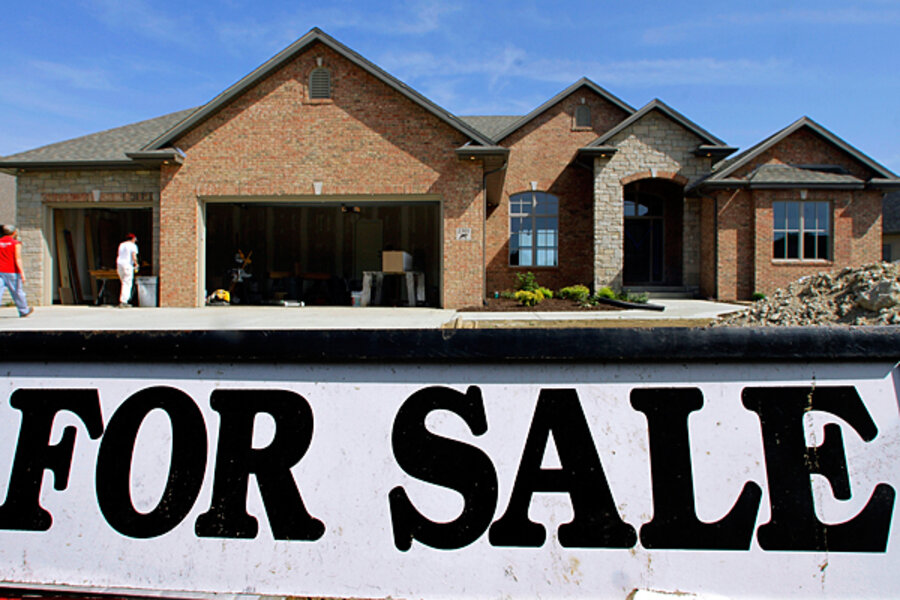Home prices hit post-boom lows: What does that mean for housing market?
Loading...
Just when prognosticators were starting to get more optimistic about a housing recovery comes this news: A major index of US home prices fell to new post-boom lows during in the first quarter.
Does this mean all the hopes for a springtime of renewal in the housing market are being dashed?
Not really. Many housing analysts see the market in a period of bottoming out and stabilizing after the deep recession. The numbers from the Standard & Poor's Case-Shiller Home Price Index don't contradict that view.
But the home-price dip is a reminder that the stabilizing process has been slow and arduous, and that it's not over. This important sector of the economy – which typically helps lead the way out of recessions – still has plenty of problems to work through.
Here's Tuesday's data: The S&P Case-Shiller index of home prices nationwide edged down to a level of 123.33 in the first quarter of this year, down 35 percent from its 2006 peak. Prior to the housing boom, in January 2000, this index stood at 100.
The brighter side to the Case-Shiller data: Among the major locales in a 20-city Case-Shiller index, 12 saw average prices rise in March, compared with the month before. Only seven of the cities saw price declines for the month, while one was flat.
Just as important, the price swings during the past year have been modest in most of the cities. Seven cities posted price gains during the past year, in the Case-Shiller survey. Among those showing price declines, the only cities showing declines larger than 4 percent were Los Angeles (4.8 percent), Phoenix (6.1 percent), Chicago (7.1 percent), Las Vegas (7.5 percent), and Atlanta (17.7 percent).
What's up in Atlanta? In part it's a delayed response. In hindsight, the city overbuilt during the boom, like many other cities around the nation that had strong population growth. Unlike, say, in Miami or Las Vegas, in Atlanta some of the worst fallout for home prices has come just in the past year.
But the examples like Atlanta are the exception, not the rule. The National Association of Realtors recently said that some cities now have something more like a "seller's market," with tight supply of for-sale homes relative to demand. Those include Miami, Phoenix, Seattle, and Washington, the group said.
"In most cities, home prices appear to be stabilizing," forecasters Patrick Newport and Michelle Valverde of IHS Global Insight write in an analysis of the new Case-Shiller numbers. They note that another prominent home price index, put out by the Federal Housing Finance Agency (FHFA), shows that more clearly.
The housing market's progress has come as the job market has begun to improve and interest rates have remained low.
At the same time, it's clear that many prominent cities still have a long road to travel to get back to normal market conditions. A large share of home sales nationwide are still of the "distressed" variety, as investors buy homes that have been in foreclosure or serious mortgage delinquency.
About 12 percent of homeowners with mortgages, more than 6 million homeowners, were either delinquent or in foreclosure at the end of the first quarter, according to the Mortgage Bankers Association. About 22 percent of residential mortgages are "under water," with loan balances larger than the current value of the home, according to the data firm CoreLogic.
These problems hit the market in two big ways. Most obvious is the high level of distressed properties for sale. The second factor relates to buyer demand: People who have defaulted on loans need to rebuild their credit scores before they can become homebuyers again.
Another risk facing the nascent recovery in housing is the broader economy. If Europe falls into a new financial crisis based on concerns about the ability of nations like Greece and Spain to pay their debts and remain in the eurozone, it could hurt the economy worldwide.
So the Case-Shiller numbers aren't dire news, but a rosy 2012 for housing is far from assured.








